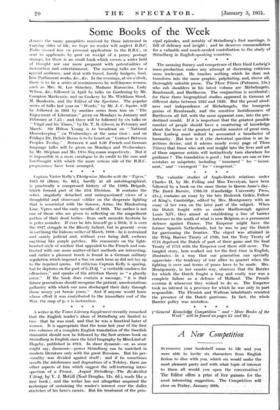The valuable studies of Anglo-Dutch relations under Charles II, by
Mr. Feiling and Miss Trevelyan, have been followed by a book on the same theme in Queen Anne's day. The Dutch Barrier, 1705-19 (Cambridge University Press, 21s.), contains an essay by the late Roderick Geikie, Fellow of King's, Cambridge, edited• by Mrs. Montgomery with an essay of her own on the later part of the subject. When the Dutch fought with us under Marlborough against Louis XIV, they aimed at establishing a line of barrier fortresses to the south of what is now Belgium, as a permanent defence against France. The Emperor might have the former Spanish Netherlands, but he was to pay the Dutch for garrisoning the frontier. The object was attained in the Whig Barrier Treaty of 1709, but the Tory Treaty of 1713 deprived the Dutch of part of their gains and the final Treaty of 1715 with the Emperor cost them still more. The tangled story, here worked out for the first time in English, illustrates—in a way that our generation can specially appreciate—the tendency of war allies to quarrel when the fighting is over and terms of peace have to be made. Mrs. Montgomery, in her caustic way, observes that the Barrier for which the Dutch fought a long and costly war was a complete failure as a defence of Holland. The French overran it whenever they wished to do so. The Emperor took no interest in a province for which he was only in part responsible. The Flemish and Walloon inhabitants resented the presence of the Dutch garrisons. In fact, the whole Barrier policy was mistaken.






































 Previous page
Previous page